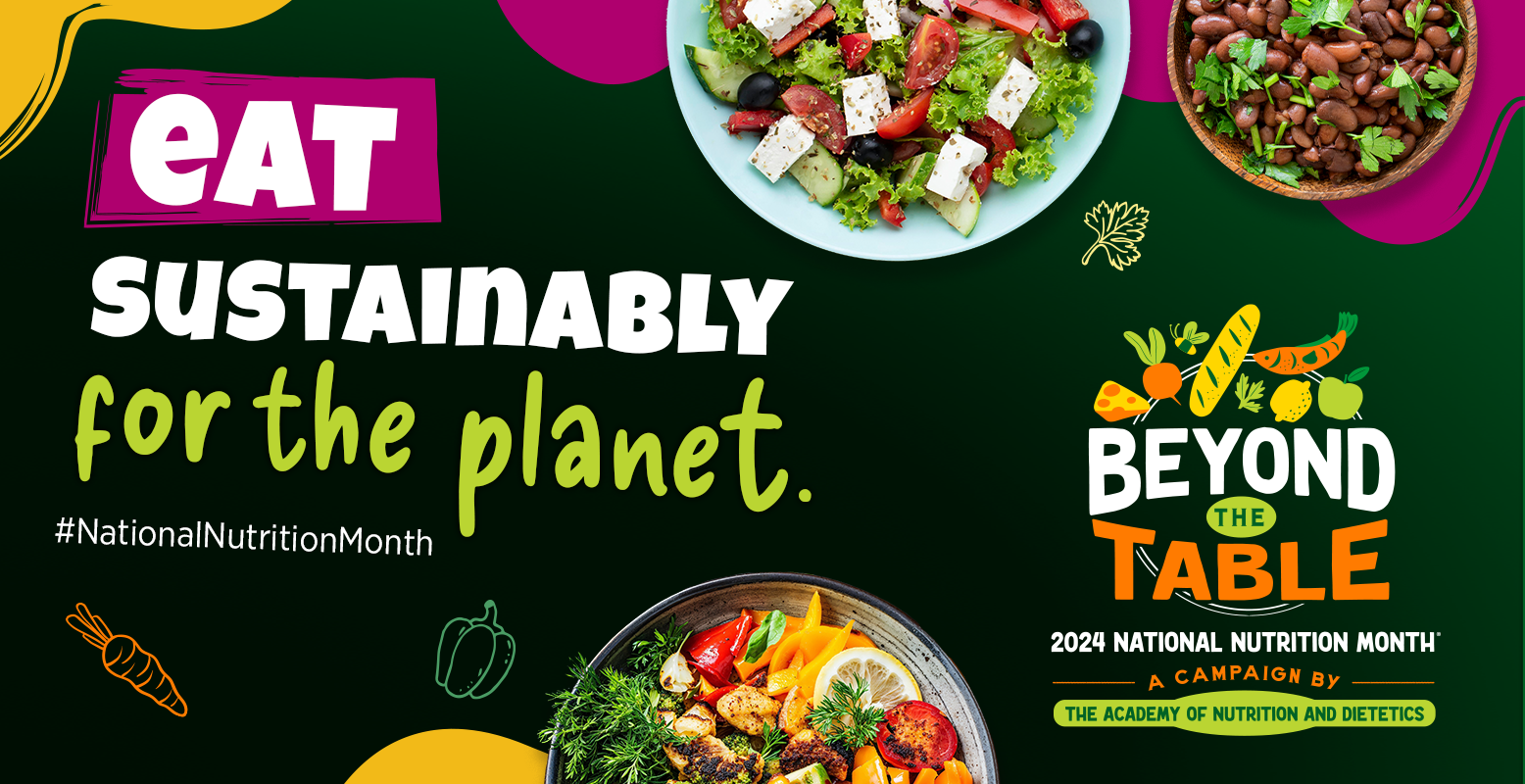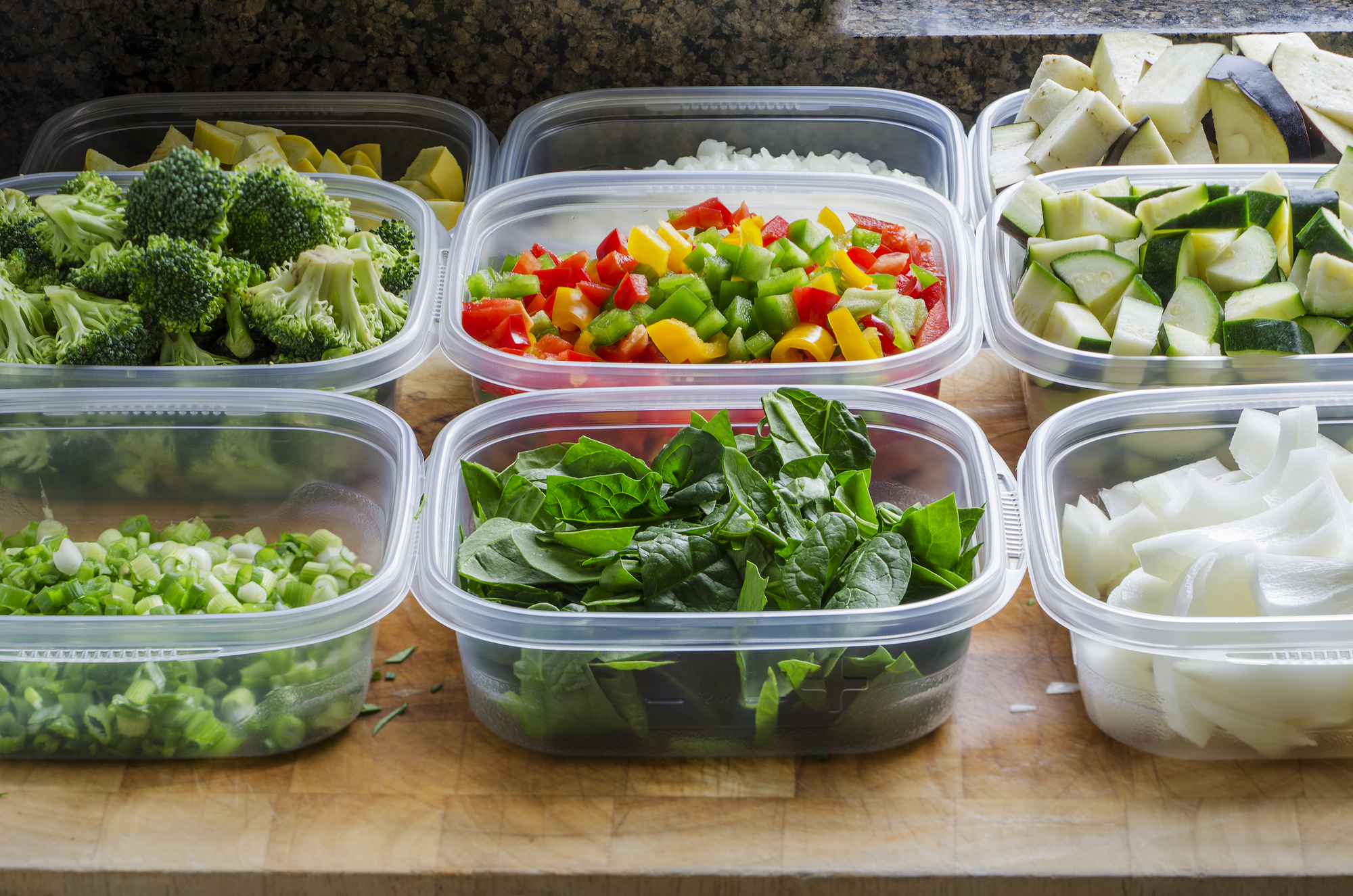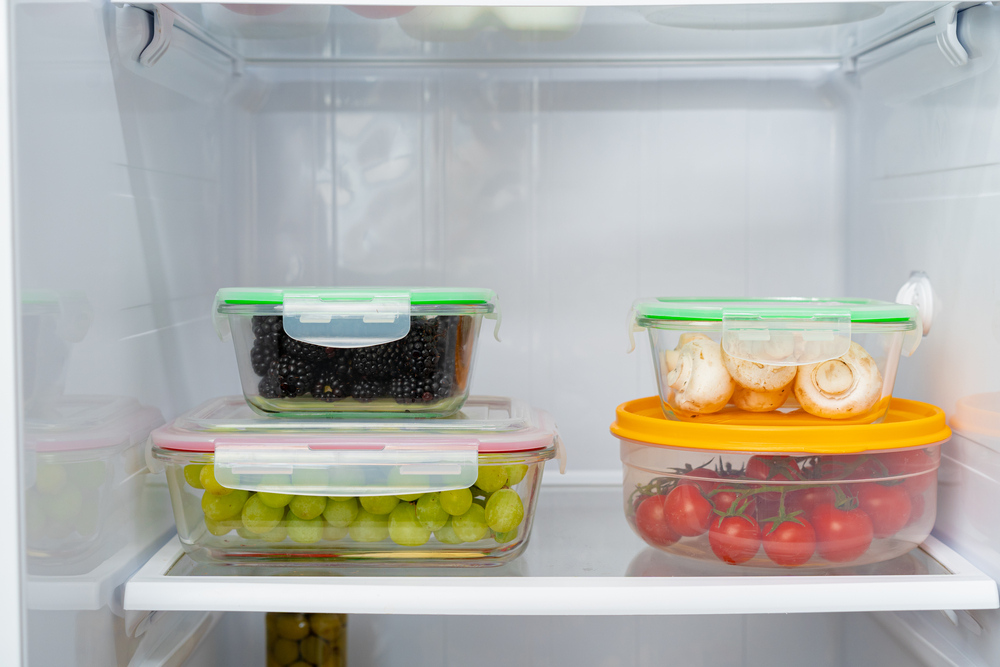
5 Ways to Reduce Food Waste for National Nutrition Month
By Danielle Hooker, MS
Meredith College- Dietetic Intern
Did you know that March is National Nutrition Month? This year’s theme is “Beyond the Table,” focusing on the whole lifecycle of a food product, not just what happens on the dinner table. Some ways to celebrate National Nutrition Month are learning a new cooking technique or skill, trying a new-to-you fruit or vegetable, or enjoying your favorite nutritious cultural staples.
Another way to participate in the theme of National Nutrition Month is to eat with the environment in mind! But how? One major way is to reduce food waste. Here are five creative ideas to help you reduce food waste in your home:

1. Shop your refrigerator, freezer, & pantry first
Making a habit of checking your home first will help you use the ingredients in your refrigerator or pantry before they expire or go bad. This will also help you to be aware of the items that you have on hand so that you aren’t buying what you already have. No need to spend extra money on duplicating what may already be in your pantry.
2. Store leftovers safely
Safely storing leftovers is important to your health, since improperly storing leftovers can make you sick. Make sure to put food in the refrigerator in sealed containers as soon as everyone is done eating. Label leftovers with the date they were put in the fridge using tape and a permanent marker. Visit foodsafety.gov for information on storing cold food, meat and poultry, food during a power outage, and more. You could also use an app, such as Foodkeeper, to keep track of how long leftovers have been in your refrigerator and that they are safe to eat (1).

3. Use similar ingredients in multiple dishes
Often when a recipe calls for a small amount of an ingredient, like half of an onion or half a can of enchilada sauce, it’s easy to put the rest of the ingredient back into the refrigerator, forget about it, and eventually throw it out. If you find that this happens to you, plan another recipe later in the week to use the rest of that ingredient. For example, the enchilada sauce could be used to flavor a soup, stew, or pot of beans. Doing this can also help reduce food waste and reduce your grocery budget.
4. Reimagine your leftovers
Do you find that leftovers get thrown away because you don’t want to eat the same thing over again? You can make it look and taste different by transforming the dish into something completely new. Pair it with eggs to make a scramble, stuff it into a baked potato, make it into a soup, or serve it over rice. Keeping ingredients like potatoes, eggs, rice, beans, or stock cubes on hand makes it easier to reinvent your meals on the fly.

5. Start composting your food waste
Many foods that need to be thrown away can instead be taken to your local compost center to be turned into nutrients for the soil. This process makes sure that we get the most out of the food that we buy. You can also create a compost pile in your backyard using fruit or vegetable scraps, crushed eggshells, coffee grounds, leaves, and grass clippings (2). Learn more about composting and how you can start composting at home.
Celebrating National Nutrition Month is an opportunity to take a deeper look at the life cycle of our food. At the Poe Center, the GrowWELL Garden is the perfect place to learn more about how food grows and how the compost from leftover foods adds nutrients back into the soil. We also have the CookWELL teaching kitchen where people of all ages can learn how to prepare fruits and veggies after they are harvested. This National Nutrition Month, the Poe Center invites you to use these tips and learn more about making informed food choices and developing healthful eating and physical activity habits.
Sources:
Featured Program: Grow It, Try It, Like It
Grow It, Try It, Like It is a garden-themed nutrition education series for preschoolers. The 7-session series introduces children to three fruits (peaches, strawberries, and cantaloupe), and three vegetables (spinach, sweet potatoes, and crookneck squash). The 30-minute sessions include tasting fruits and vegetables while incorporating physical activity, literacy, songs and nutrition education activities that introduce MyPlate. Promote learning at home with fun parent/child activities and family-sized recipes that give tips for cooking with children.
Program Participants: Preschool, Kindergarten
Program Length: 7 sessions, 30 minutes each

Featured Video: 5 Food Waste Reduction Tips for Your Home
Looking for some more information on reducing food waste in your home? Join the Poe Center’s garden educator Catherine Wills and food-waste expert Mei Li as they go over 5 tips to reduce food waste in your household. These tips will help save time, money, and food in your home.

